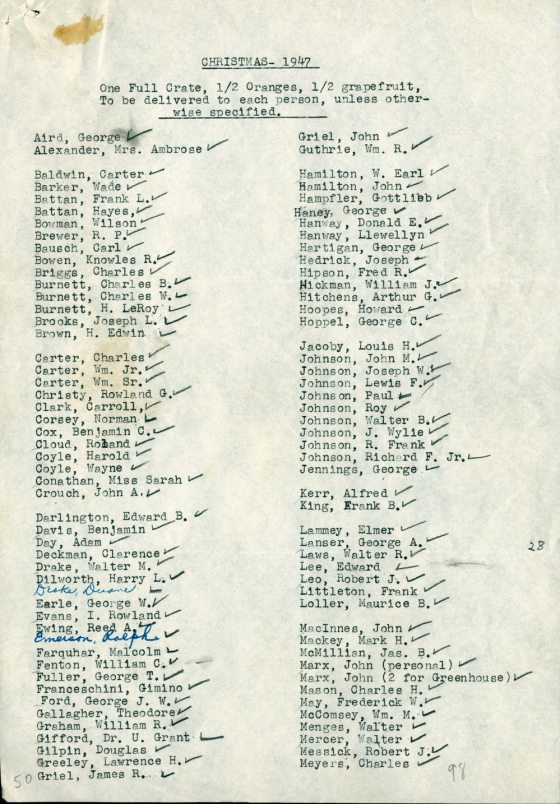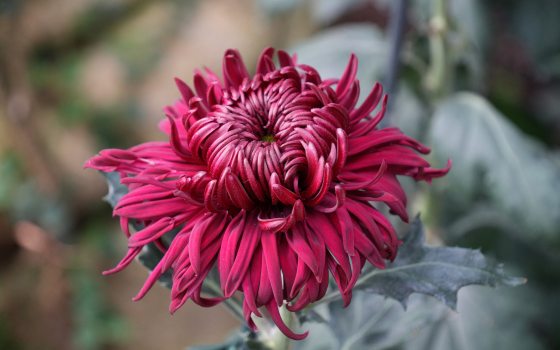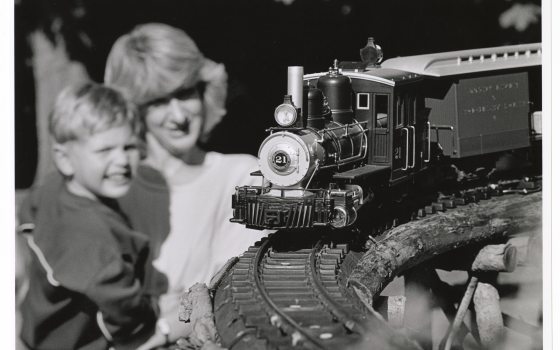Holidays celebrate tradition. Gifts—symbols of good will, of gratitude, of joy—are a part of that tradition. Many of our best-loved holidays take place in fall and winter, as we gather to share the fruits of our harvest, the company of family and friends, and our hopes for the coming year. Come join us for A Longwood Christmas, where the gift and tradition of fruit is the centerpiece of our celebration.
In 1907, Pierre S. du Pont planted the first apple, peach, and pear trees at the estate that would later become Longwood Gardens. In 1912, he added grapevines, figs, and oranges. The Conservatory, built between 1919 and 1921, created the ideal environment for growing fruit out of season. Along with fruit deliveries from distant places, these were the perfect holiday gifts for Mr. du Pont’s family, friends, and employees.
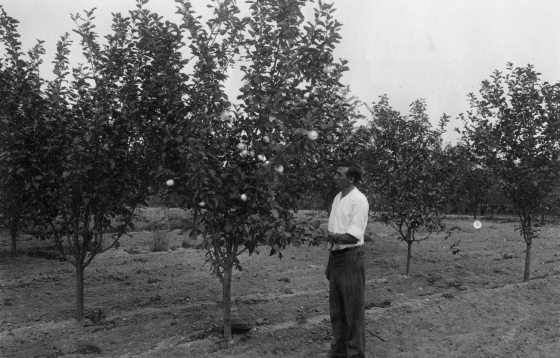

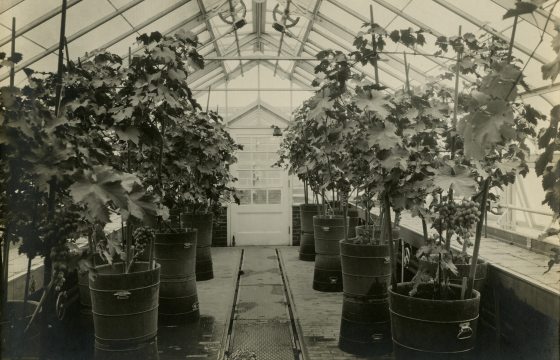
Additional clues to the history of fruit-growing at Longwood can be found in our Library & Archives, where books from Mr. du Pont’s personal collection provide evidence of the learning process.
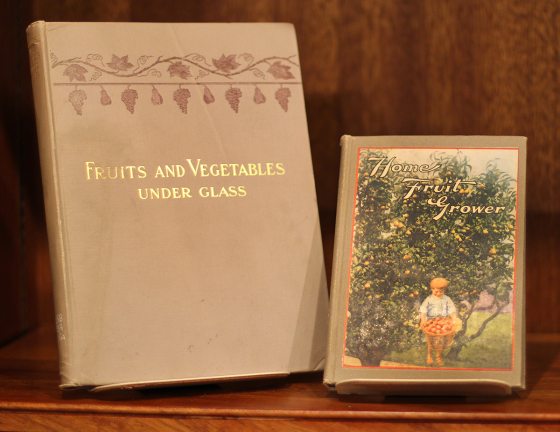
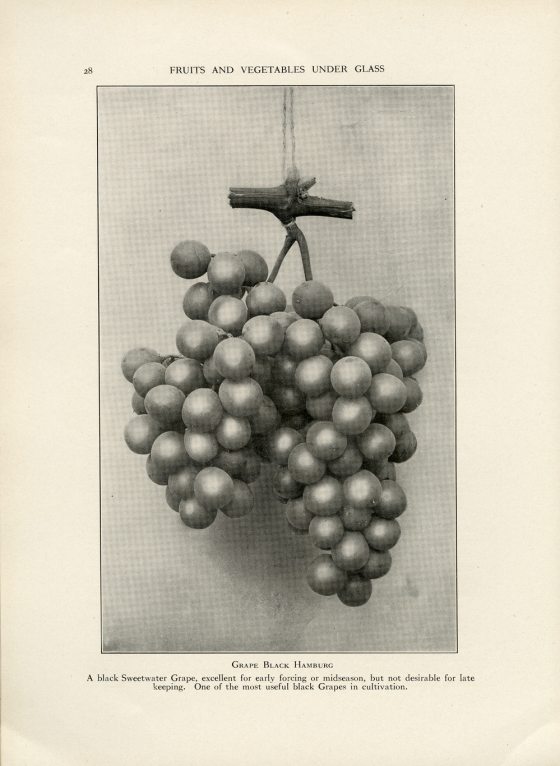
In Fruits and Vegetables Under Glass, a 1912 publication about the culture of hothouse fruit, author William Turner describes “growing fruits and vegetables out of season [as] a fascinating occupation, and time flies all too fast when we become interested in that pursuit.”
Home Fruit Grower, published in 1918, is another book from Mr. du Pont’s shelf that describes the pleasure and requisite skills of this pastime. Author M. G. Kains believes that the amateur grower sets the standard for excellence: "The commercial grower produces fruit for a livelihood . . . the amateur grows it for the joy of achievement, for the realization of a high ideal. In the one case the fruit is the means to an end; in the other, it is the end itself."
Surely the history of Longwood reflects such high ideals. The fruit that Pierre S. du Pont grew under glass embodied both the exotic and the homegrown, wrapping them up in one flavorful package. The end was a gift from his garden.
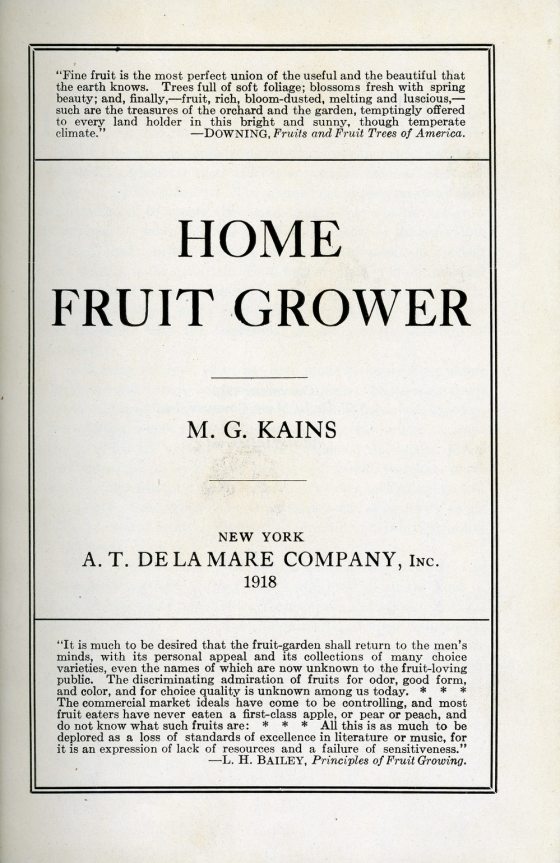
While the images here document the history of fruit-growing at Longwood, letters and lists from the Hagley Museum & Library hold clues to the fruitful tradition of gift-giving.
As you enjoy the present splendor of Longwood’s fruit-laden trees and garlands, lists from the archives invite you to step back in time and imagine the delight of receiving a pound of apricots, a whole crate of oranges and grapefruit, or a basket of apples from Mr. du Pont.
So if you haven’t yet finished your holiday shopping, consider the gift of fruit. It’s a gift of the land, and of the community of hands that nourished it. It’s a gift that’s a wonder to behold and a pleasure to consume, and yet, in its consumption, is neither wasteful nor forgotten. The memory of its giving lives on in letters of thanks, while future gifts spring from its seed.
You might also consider the gift of Longwood Gardens, as we look forward to a New Year by exploring themes of land stewardship, community, and conservation. In the meantime, come visit A Longwood Christmas,where the gift and tradition of fruit is the centerpiece of our celebration.
